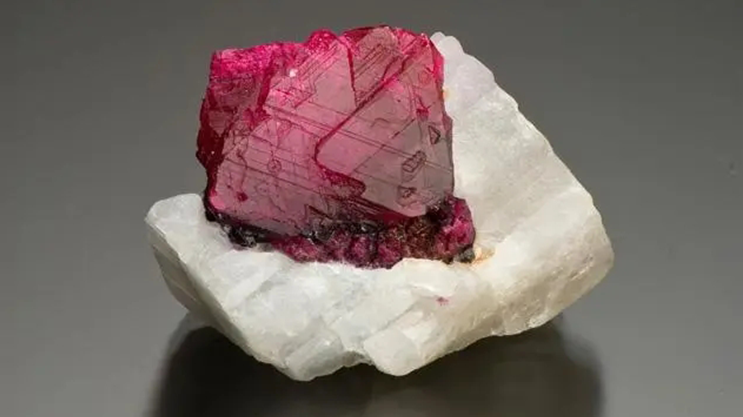Ruby is a gem-quality crystalline material chemically composed of aluminium oxide (Al2O3). It is known by the English name ‘ruby’, after its deep red colour. Ruby is a very hard material, reaching a hardness of 9 on the Mohs scale, second only to diamond. This hardness makes ruby one of the ideal materials for the manufacture of high hardness optical components, laser devices and ornamental jewellery.
The deep red colour of rubies is mainly due to the presence of chromium. During the crystallisation process, small amounts of chromium ions take the place of aluminium ions, creating the ruby's distinctive red colour. In addition to the red colour, rubies can also appear in different colour variants such as pink, orange-red and purple-red.
Due to its unique optical properties and beautiful appearance, ruby is widely used in gemstone jewellery, optical devices and laser technology. In laser devices, ruby is used as a laser medium to produce laser beams in the visible range. Ruby is also an important material for ornamental jewellery, and its deep red colour is considered to have a symbolic meaning of auspiciousness and good fortune.
Femtosecond laser micro-perforation on ruby is a high-precision processing method that is commonly used to manufacture micro-optics, laser devices and micro-machining devices, etc. Ruby is a very hard material, and it is difficult to achieve microfabrication on it by conventional processing methods, which can be overcome by femtosecond laser technology.

In the process of femtosecond laser processing of ruby, the very short pulse energy emitted by the femtosecond laser can produce localised heating with high energy density on the surface of ruby, rapidly evaporating the material and forming tiny holes. Due to the extremely short pulse duration and high energy density of the femtosecond laser, there is virtually no heat conduction or heat-affected area during processing, thus avoiding thermal damage and deformation of the material.
The process of micro-hole processing on ruby by femtosecond laser mainly includes the following steps:
1. parameter setting: according to the processing requirements and the characteristics of ruby material, set appropriate femtosecond laser parameters, including pulse energy, pulse frequency, scanning speed, etc..
2. Processing positioning: fix the ruby sample on the processing platform and make sure the processing position is accurately positioned.
3. Femtosecond laser processing: Start the femtosecond laser, focus the laser beam on the ruby surface, and realise the precise processing of microvia by controlling the moving path of the laser and the processing parameters. The femtosecond laser pulse instantly evaporates the ruby surface material, forming tiny holes.
4. Quality inspection: After the processing is completed, the ruby sample is subjected to quality inspection and hole measurement to ensure that the processing quality meets the requirements.
Through the femtosecond laser microporous processing on ruby, high precision, high quality and high efficiency can be achieved, providing reliable technical support for the manufacture and application of micro devices.

Monochrome Technology Femtosecond Laser Microvia Forming Equipment

